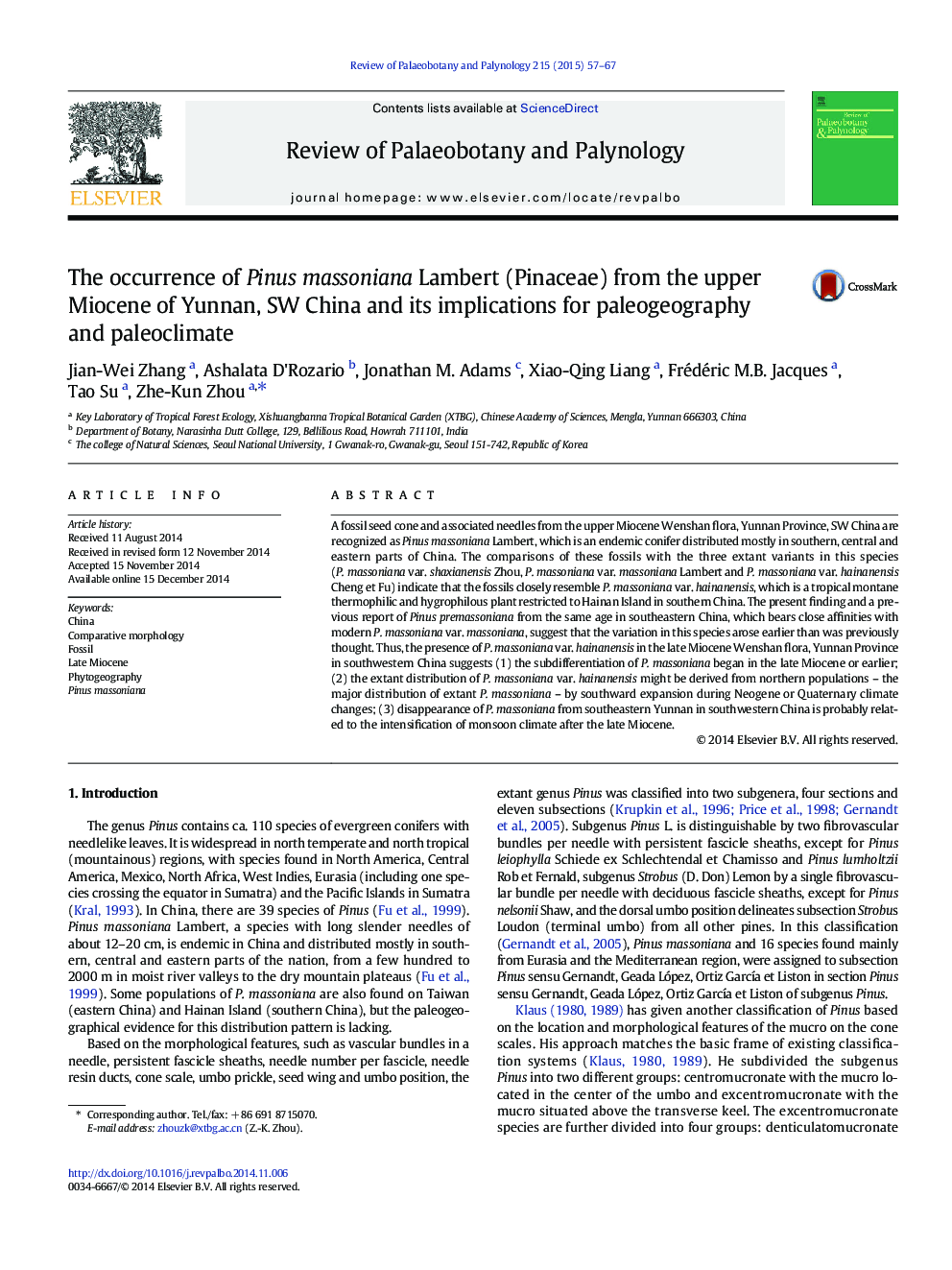| کد مقاله | کد نشریه | سال انتشار | مقاله انگلیسی | نسخه تمام متن |
|---|---|---|---|---|
| 4750248 | 1642483 | 2015 | 11 صفحه PDF | دانلود رایگان |

• Pinus massoniana var. hainanensis was recognized in the upper Miocene of SW China.
• Differentiation within P. massoniana begun in the late Miocene or earlier.
• Global cooling led to the southward expansion of P. massoniana.
• Amplification of Asian monsoon led to the disappearance of P. massoniana in SW China.
A fossil seed cone and associated needles from the upper Miocene Wenshan flora, Yunnan Province, SW China are recognized as Pinus massoniana Lambert, which is an endemic conifer distributed mostly in southern, central and eastern parts of China. The comparisons of these fossils with the three extant variants in this species (P. massoniana var. shaxianensis Zhou, P. massoniana var. massoniana Lambert and P. massoniana var. hainanensis Cheng et Fu) indicate that the fossils closely resemble P. massoniana var. hainanensis, which is a tropical montane thermophilic and hygrophilous plant restricted to Hainan Island in southern China. The present finding and a previous report of Pinus premassoniana from the same age in southeastern China, which bears close affinities with modern P. massoniana var. massoniana, suggest that the variation in this species arose earlier than was previously thought. Thus, the presence of P. massoniana var. hainanensis in the late Miocene Wenshan flora, Yunnan Province in southwestern China suggests (1) the subdifferentiation of P. massoniana began in the late Miocene or earlier; (2) the extant distribution of P. massoniana var. hainanensis might be derived from northern populations – the major distribution of extant P. massoniana – by southward expansion during Neogene or Quaternary climate changes; (3) disappearance of P. massoniana from southeastern Yunnan in southwestern China is probably related to the intensification of monsoon climate after the late Miocene.
Journal: Review of Palaeobotany and Palynology - Volume 215, April 2015, Pages 57–67